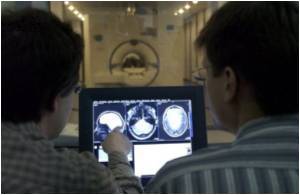Non-Hispanic white patients were significantly more likely (77.8 percent) than other racial-ethnic groups to receive medication for psychiatric conditions.

‘About 25 percent of adults in the US suffer from some type of psychiatric condition at any time, with the most common conditions being depression and anxiety.’





"It's concerning that we saw a higher rate of diagnosis of schizophrenia and seemingly an under-treatment in terms of pharmacotherapy for that group," said Ashli A. Owen-Smith, co-author of the study and assistant professor of health management and policy in the School of Public Health at Georgia State University. "In general, pharmacotherapy is an important part of the treatment plan. That's a finding that warrants some additional research." Psychiatric conditions lead to greater disability than other chronic illnesses and cost the U.S. as much as $300 billion each year.
In this study, the participating healthcare systems had a combined 7.5 million patients age 18 or older, with about 1.2 million patients receiving a psychiatric diagnosis in 2011. Diagnoses included anxiety disorder, depressive disorder, bipolar disorder, schizophrenia spectrum disorder and other psychoses.
The researchers used electronic medical record databases and insurance claims to determine rates of diagnoses, prescription of psychotropic medications and formal psychotherapy sessions received by white, Asian, black, Hispanic, Native Hawaiian/other Pacific Islander, Native American/Alaskan Native and mixed-race patients.
"We saw that prevalence rates for depression and anxiety diagnoses were lower among racial and ethnic minorities compared to non-Hispanic whites," said Owen-Smith, who worked at the Kaiser Permanente Georgia Center for Clinical and Outcomes Research when the study was conducted. "Non-Hispanic whites were consistently higher in use of pharmacotherapy compared to other race-ethnicities. For psychotherapy, interestingly, the rates were similar or sometimes higher for racial or ethnic minorities."
Advertisement
- Native American/Alaskan Native patients had the highest rate of any diagnosis (20.6 percent)
- Asian patients had the lowest rates of any diagnosis (7.5 percent)
- Non-Hispanic white patients were significantly more likely (77.8 percent) than other racial-ethnic groups to receive medication
- Only 34 percent of patients with a psychiatric diagnosis received formal psychotherapy
- Racial-ethnic differences were most pronounced for depression and schizophrenia.
- Compared with whites, non-Hispanic blacks were more likely to receive formal psychotherapy for their depression or schizophrenia.
Advertisement
The study was funded by the National Institute of Mental Health.
Source-Newswise










